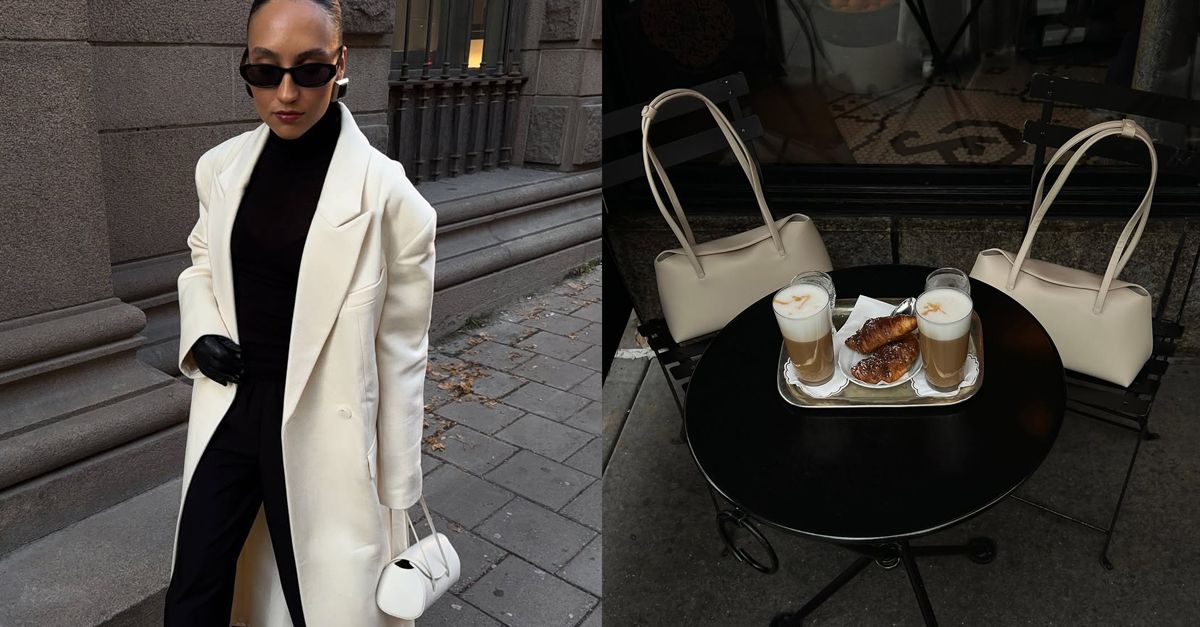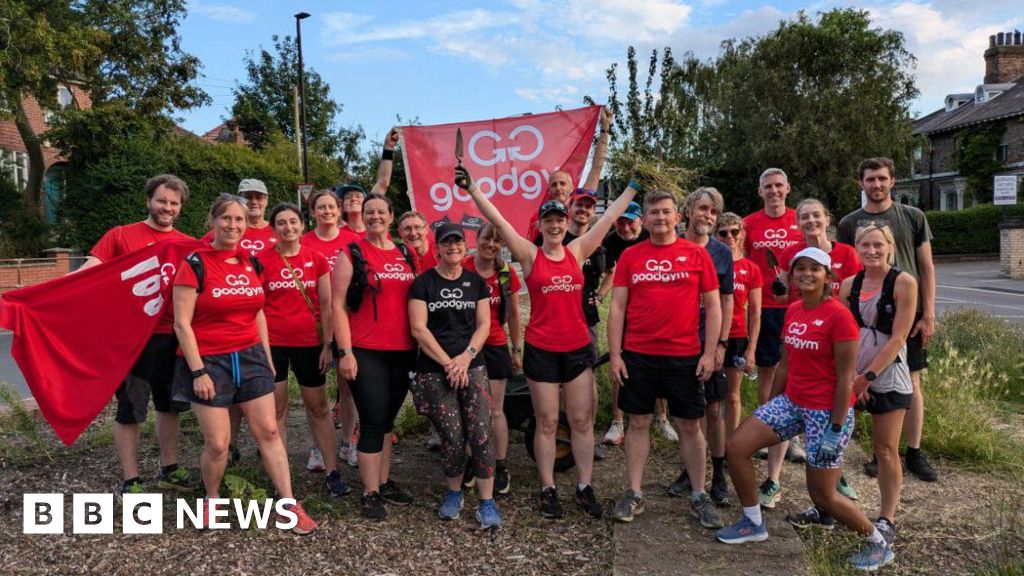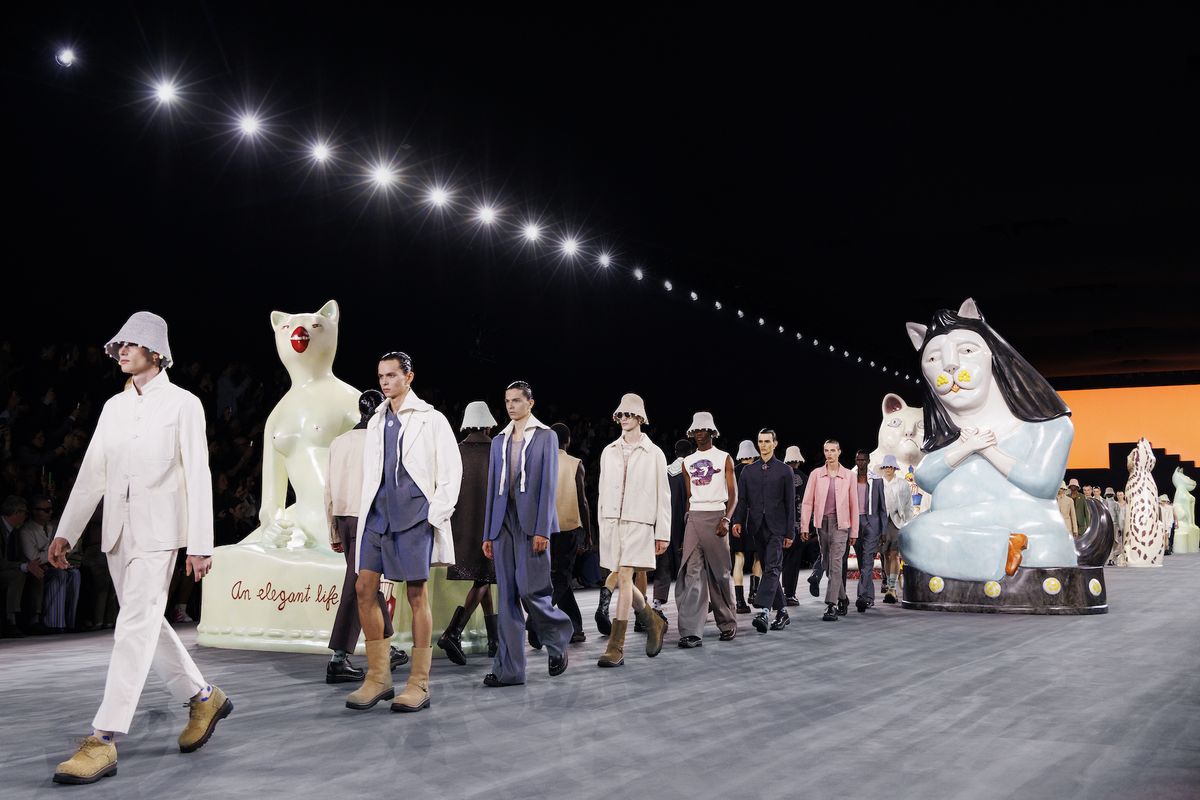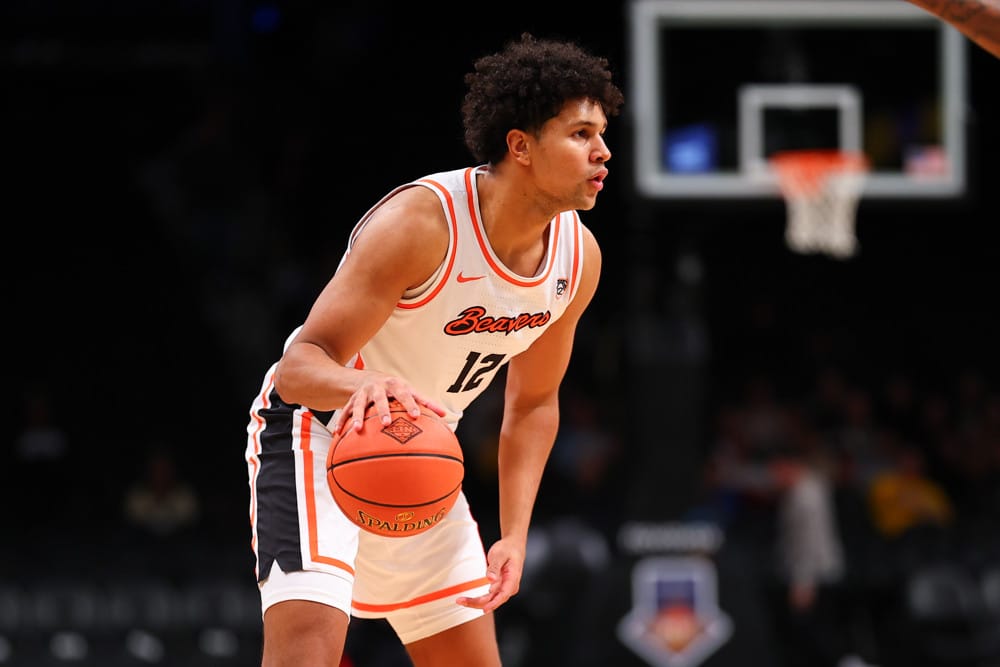Fashion
My Quest for a More Perfect Shopping Experience

On a leaden day in October, I stood in front of a mirror on the fourth floor of a townhouse on the Upper East Side of Manhattan, getting my measurements taken for a pair of pants.
The space was elegant and cozy, scaled as though for an intimate conversation at a friend’s apartment, except I was in the studio of designer Patricia Voto. Fabric swatches covered one wall, sketches lay on a round table, and small bowls of nuts, M&M’s, and dried apricots sat next to a display of shoes.
Disenchanted by the distancing effect of online shopping, Voto—a veteran of Altuzarra, Brock Collection, and Gabriela Hearst—launched her atelier concept, One/Of, in 2020. Voto and her team release two capsule collections a year, but she views them more as suggestions than dictates: Clients can purchase pieces made to measure, “demi-bespoke” (with changes to an existing design), or fully bespoke, all created with deadstock fabrics produced by mills for other brands that would otherwise languish in a storeroom.
I decided I wanted some tweed trousers in the vein of Meg Ryan’s wardrobe in When Harry Met Sally. Voto chatted with me while taking my measurements, and we consulted the fabric wall, from which she snipped a piece of muted purple tweed for me to consider. We could make a pair of pants from her collection in a similar fabric, she told me, or create a custom design.
Voto radiates a warm sense of calm that quickly quelled my nervousness about trying on clothing in front of a stranger. It’s all in service of creating a low-pressure environment for her clients: She doesn’t process transactions during fittings, and she doesn’t talk sizes. “I wanted everybody to feel like, when they come in here, it doesn’t matter your size. You have nothing to worry about,” she says. Because Voto’s team cuts each item for the client’s unique proportions, styles that may have once felt out of reach can become accessible, she says.
One/Of is part of a wave of retail upstarts selling women’s clothing and accessories that are, to some degree, bespoke: tailored, made to measure, customized, or fully custom. These brands offer a psychological balm for the disappointments of the modern shopping experience, fostering a rare sense of connection to the product and the people making it. In theory, they eliminate the dreaded experience of ordering an item online, instantly realizing that it doesn’t fit, and having to schlep the package right back to FedEx, feeling irritated and demoralized.
Nearly all of the products sold at Old Stone Trade, a luxury marketplace launched in 2021 by former fashion editor Melissa Ventosa Martin, are handmade to order by specialized artisans, and some, like a pair of $2,500 cowboy boots, require up to six months for delivery. As Ventosa Martin says, “I think, especially in this age of fast fashion, it’s really important to understand that a real human is putting in time and effort and years of experience.” It’s a version of shopping that demands unusual patience from customers who may be used to next-day delivery. Going above and beyond to help shoppers find the right fit and stay updated on their item’s production journey felt essential to Ventosa Martin. “We are 100 percent about the client,” she explains.
Buying made-to-order clothing now seems like a rarefied way to shop, the purview of celebrities and tastemakers and the very wealthy. But for most of human history, everyday people wore clothes made for them, which they sewed themselves or commissioned from a local seamstress or tailor. “In the old days, in the 19th century, you’d bring in your fabric to the dressmaker and bring in a pattern or a picture from a fashion magazine and say, ‘I want this,’ ” says Valerie Steele, director and chief curator of New York’s Museum at the Fashion Institute of Technology.
For women’s brands that offer a bespoke product today, clients are sometimes confused by the experience, which deviates so dramatically from the way they typically shop. “They’re like, ‘Wait, I can change the color? It’s going to be made to my measurements?’ ” says Voto.
Back at Voto’s atelier, I settled on a pair of soft, high-waisted trousers as an option for my hypothetical purchase. Before I walked out the door, Voto handed me a black envelope with my swatch of tweed so that I could mull it over—no pressure.
The next day, I stopped by the uptown New York atelier of Safiyaa, a London-based brand founded by Daniela Karnuts in 2011 that makes its garments to order. “We produce all U.S. orders here,” explains Caitlin Meehan, a sales specialist, noting that a full look can typically be completed in a week.
Meehan disappeared into a rack of eveningwear to pull looks for me to try on: a flared white suit that called to mind Jane Fonda, a magenta gown with a boatneck that felt very Jackie Onassis, and a regal blue cape dress—which, I learned, Meghan Markle wore on a royal tour of Fiji in 2018. (Feel free to guess who wore it better.) As with One/Of, Safiyaa releases seasonal collections but has a live archive, with garments available in more than 150 colors.
Karnuts tells me that while some shoppers are at first intimidated, self-consciousness transforms into empowerment over the course of a project. During a fitting, Meehan says, “you can see the sigh of relief. Like, ‘Okay, I feel comfortable. We’re going to find something I love, that I’m okay getting pictures taken in.’ ”
In Brooklyn, The Consistency Project is tackling a uniquely punishing shopping experience: buying jeans. “We call it ‘pant therapy,’ ” says founder Natasha Halesworth, noting that people have “a lot of trauma around shopping in general.” The Consistency Project specializes in vintage Levi’s, which the store aims to stock in kids’ sizes up to 50-plus. Customers are encouraged to make an appointment, during which Halesworth or an associate will take measurements before pulling different options, listening carefully to their feedback and providing real-time fit analysis until they identify a great pair. Tailoring, which Halesworth handles herself, is built into the $195 price tag, further fine-tuning the fit.
A journalistic failing: I lost count of how many jeans I tried on at the Consistency Project. It felt like a lot. As Halesworth and I scrutinized each pair, it became clear—to her expert eyes more than mine—that something about my hip-to-waist ratio caused certain styles to ride up, producing what I’d describe as “diaper crotch.” This was particularly true of Levi’s 501s, a style I’d tried on before with no luck and a bit of shame, since every fashion-adjacent cool girl claims to love her 501s. Halesworth set me straight, telling me that 501s are some of the most difficult Levi’s to fit and that they’re infamous for that diaperlike effect. “I would say 80 percent of women do not fit 501s well,” she says.
As customers start to understand how different styles hang on them, Halesworth notices that they begin to “separate their body from the pants.” They see that they aren’t the problem; they just need a different style of jeans. Apparently my longish torso wants a very high rise. Who knew? Not me, until I spent an hour absorbing Halesworth’s denim guidance.
I eventually landed on a pair of supremely comfortable Levi’s 550s, the store’s most frequently purchased style. Halesworth recommended taking in the waistband slightly, and she added a few pins before sending me off to change. My new jeans—sized and tweaked just for me—would be shipped to my home once they were complete. I was happy to wait.


















